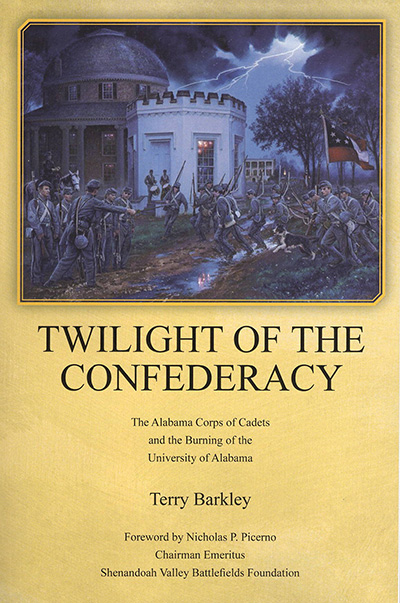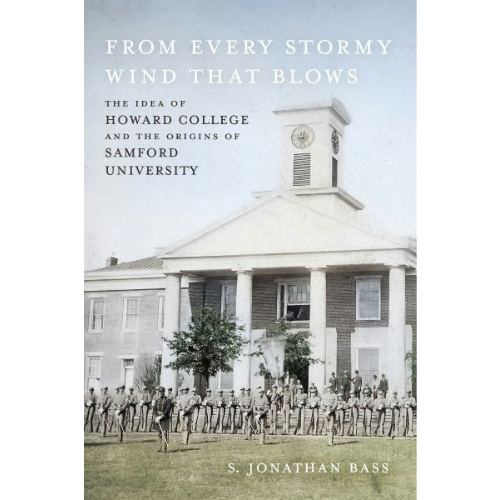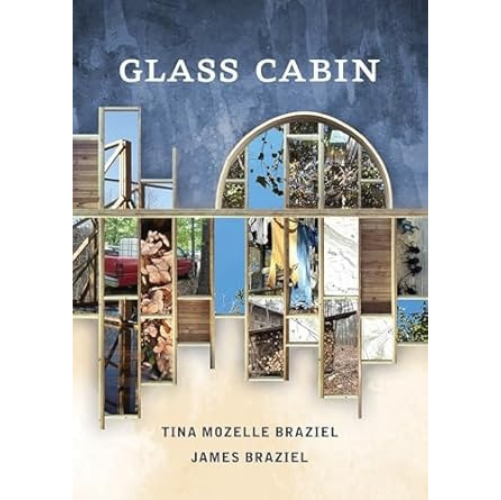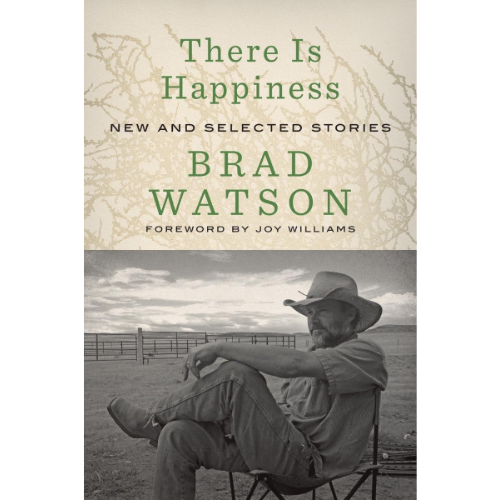By Terry Barkley
Blue Rooster Press; 2022
Paperback: $19.95
Genre: Civil War History
Reviewed by Edward Journey

Writer Terry Barkley fires the opening volley in his compact military history, Twilight of the Confederacy: The Alabama Corps of Cadets and the Burning of the University of Alabama, charging that the University of Alabama “is playing down or hiding its Confederate heritage.” He argues that, contrary to contemporary trends, the University of Alabama’s Civil War story is one “that needs to be told.”
After airing his concerns in the preface and prologue, Barkley gets down to documented history, providing an informative chronology of Union Gen. James Wilson’s raid on Alabama and Georgia in the waning days of the Civil War. As part of Wilson’s raid, an auxiliary raid on Tuscaloosa was mounted as a diversionary tactic, helmed by Union Gen. John T. Croxton with 1,500 cavalrymen in April 1865. That raid resulted in the burning of the University of Alabama on April 4, just five days before Gen. Robert E. Lee’s surrender at Appomattox Courthouse. Twilight of the Confederacy focuses on details of the various skirmishes and studiously avoids consideration of the ideological conflicts the war represents.
Barkley, an independent scholar who currently lives in Tuscaloosa, studied history as a doctoral student at the University of Alabama and worked as a graduate assistant at the University’s Hoole Special Collections Library while completing an M.L.S. degree in archives and special collections. A former archivist for Marion Military Institute, Alabama, among other institutions, Barkley has authored or co-authored books on historical topics ranging from a Nebraska landscape artist to religious and educational movements, the burning at the stake of an enslaved woman in Colonial Virginia, and another “hermit” – not named Thoreau – at Walden Pond in Massachusetts.
Barkley contends that the University of Alabama’s all-white male student body was militarized in 1860 “primarily to combat student discipline problems and not necessarily to prepare the university for possible war-time service.” Barkley frequently points out the youth and inexperience of the Alabama Corps of Cadets – some of whom were as young as fourteen. After a time, the school could not admit cadets over the age of eighteen since eighteen was conscription age; the university’s president, Col. Landon C. Garland, regularly fought off attempts to conscript university cadets into the regular Confederate army. Records show that the average age of an Alabama cadet during the war was fifteen and sixteen; the university has been referred to as the “nursery” of the Confederate army.
During the war, while some militarized academic institutions in the South dropped their academic programs altogether, University of Alabama leadership apparently strove to maintain its offerings of a classically based education while concurrently pursuing military training. As the war dragged on, necessities – including food – were in short supply. By 1864, a condition of cadet enrollment in the university was for parents or guardians of all “aspiring cadets” to provide one hundred pounds of bacon to the school (two hundred pounds, according to other reports). The cadets were irritated that the highest quality bacon was used to barter for other supplies while the students were served the lesser quality meat.
It is in minutiae like the bacon “enrollment fee” that Barkley’s narrative is most interesting. He also provides details about the “battle of Tuscaloosa,” which he admits was “a skirmish at best.” He includes the story of a Tuscaloosa wedding interrupted by Union forces during the “battle.” The groom, Capt. James A. Carpenter, was arrested, along with the other men in attendance at the wedding. When Croxton realizes that he and Carpenter were previously schoolmates in Kentucky, he paroles him to be with his bride until the next sundown.
The most costly and tragic casualty of the Tuscaloosa engagement was the burning of the University of Alabama, a story that was probably familiar to any undergraduate back when I was a student. Four buildings were spared; the little Round House, a crenellated cadet guard house and the “only actual military structure on campus,” was one of them. The Rotunda, containing the university’s library, was destroyed. In describing the burning, Barkley debunks one of my favorite legends of the university. According to the story I always heard, the federal colonel gave the university librarian the opportunity to save one library book from the flames. The book that was saved was a rare copy of the Koran. Barkley asserts that twelve hundred books were actually saved and most of them survive in university archives today.
Barkley incorporates anecdotal and statistical evidence to bring life to the Civil War history of Tuscaloosa, its university, and the surrounding areas. Despite the relative obscurity of the Tuscaloosa invasion, Barkley’s research should be of interest to students of Civil War military history. Those familiar with Tuscaloosa and the university campus will find Barkley’s narrative easy to follow with reference to town and campus locations as they relate to the present-day environment.
Edward Journey, a retired educator and theatre professional who lives in Birmingham, regularly shares his essays in the online journal “Professional Southerner” (www.professionalsoutherner.com).





